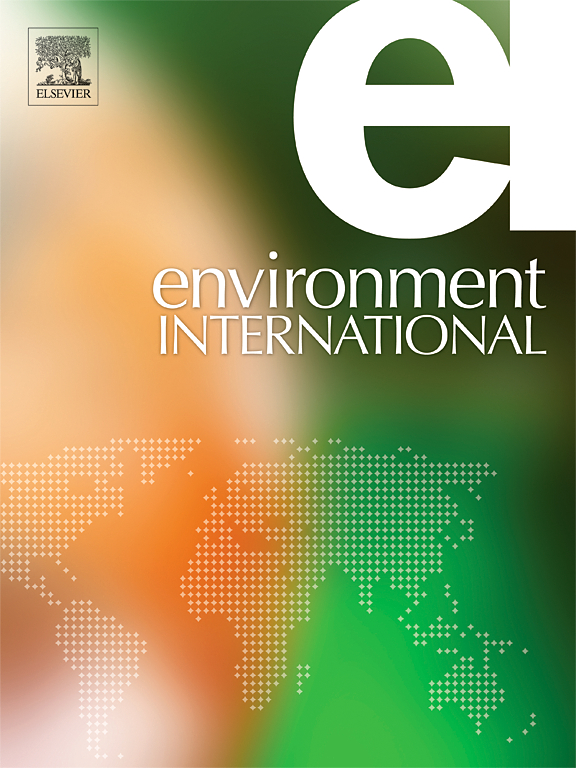用于安全评估的化学品潜在系统可用性分类
IF 9.7
1区 环境科学与生态学
Q1 ENVIRONMENTAL SCIENCES
引用次数: 0
摘要
化学品安全评估对保护人类健康至关重要,但目前的方法存在严重的局限性。它们无法解决需要评估的物质数量迅速增加的问题,并进一步依赖于动物试验,公众希望基于道德原因逐步淘汰动物试验。为了解决这个问题,欧洲动物试验替代方法伙伴关系(EPAA)建议使用基于新方法方法的系统毒性分类的新框架。该框架的一个维度是将物质分组为不同类别的潜在系统可用性(PSA)关注(低、中、高)。但到目前为止,如何实现这种分类在概念上和实践上仍然不清楚。在这里,我们概述了对PSA关注类别的健康保护定义的理论考虑,并提出了一种定量评估该属性的方法。利用基于生理学的高通量动力学模型,我们能够对150种EPAA NAM Designathon化合物中的139种的PSA关注点进行分类。此外,我们手动注释这些化合物,以评估预测分类对专家判断的合理性。我们的结果概述了在何种情况下,由于其毒性动力学性质,优先考虑或不优先考虑化学品是适当的。然而,我们发现大多数化合物不能单独根据其PSA进行评估,需要将其视为中等PSA关注,以便将其分类为任何整体系统毒性关注类别仍然是可能的。未来整合生物活性数据将是必要的,以充分判断我们的方法和整个框架的效用。本文章由计算机程序翻译,如有差异,请以英文原文为准。


Potential systemic availability classification of chemicals for safety assessment
The assessment of chemical safety is essential for protecting human health, yet current approaches have severe limitations. They are unable to address the rapidly growing number of substances requiring evaluation and further rely on animal testing, which the public expects to be phased out for ethical reasons. To address this, the European Partnership for Alternative Approaches to Animal Testing (EPAA) proposed the use of a novel framework for the classification of systemic toxicity based on new approach methodologies. One dimension of this framework is the grouping of substances into different classes of Potential Systemic Availability (PSA) concern (low, medium, high). But so far it remained conceptually and practically unclear how this classification can be achieved. Here, we outline the theoretical considerations for a health-protective definition of PSA concern classes and present a method for the quantitative evaluation of this property. Using high-throughput physiologically based kinetic modelling, we are able to classify the PSA concerns of 139 out of 150 EPAA NAM Designathon compounds. Further, we manually annotate these compounds to evaluate the plausibility of predicted classifications against expert judgement. Our results outline under which circumstances it is appropriate to prioritise or deprioritise chemicals due to their toxicokinetic properties. However, we find that most compounds cannot be assessed on their PSA alone and need to be considered medium PSA concern so that classification into any overall systemic toxicity concern class remains possible. Future integration of bioactivity data will be necessary to fully judge the utility of our method and of the entire framework.
求助全文
通过发布文献求助,成功后即可免费获取论文全文。
去求助
来源期刊

Environment International
环境科学-环境科学
CiteScore
21.90
自引率
3.40%
发文量
734
审稿时长
2.8 months
期刊介绍:
Environmental Health publishes manuscripts focusing on critical aspects of environmental and occupational medicine, including studies in toxicology and epidemiology, to illuminate the human health implications of exposure to environmental hazards. The journal adopts an open-access model and practices open peer review.
It caters to scientists and practitioners across all environmental science domains, directly or indirectly impacting human health and well-being. With a commitment to enhancing the prevention of environmentally-related health risks, Environmental Health serves as a public health journal for the community and scientists engaged in matters of public health significance concerning the environment.
 求助内容:
求助内容: 应助结果提醒方式:
应助结果提醒方式:


